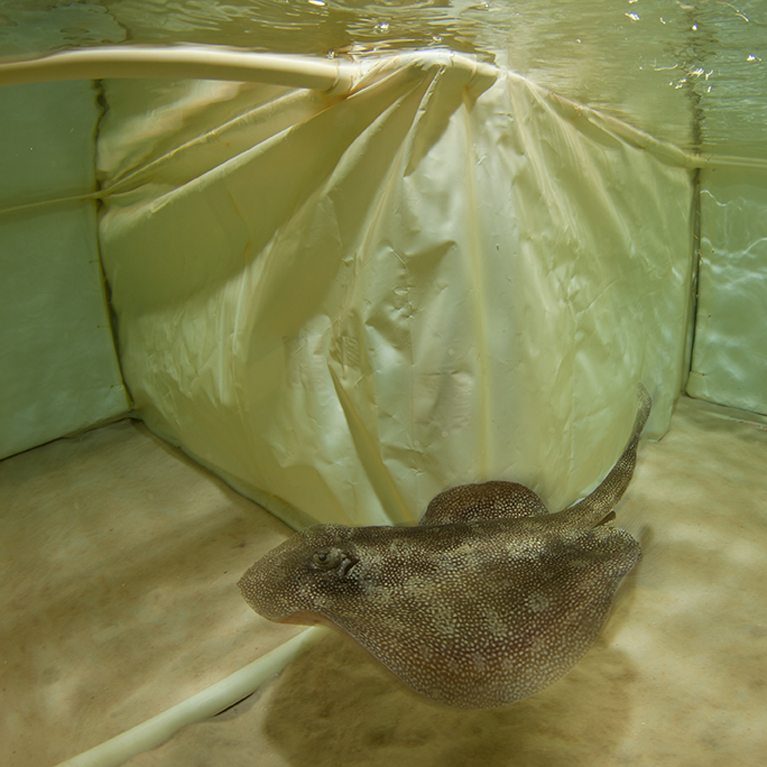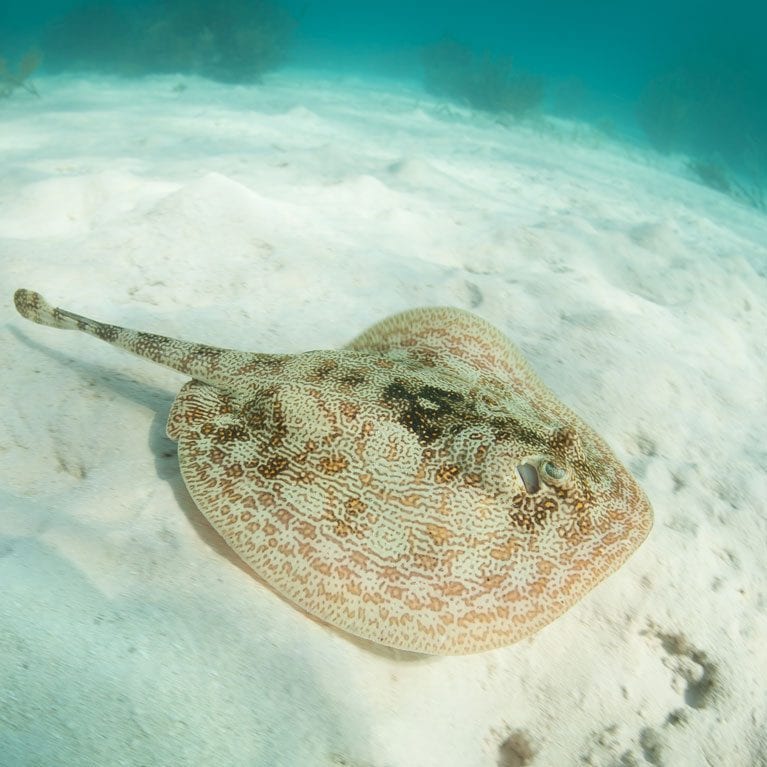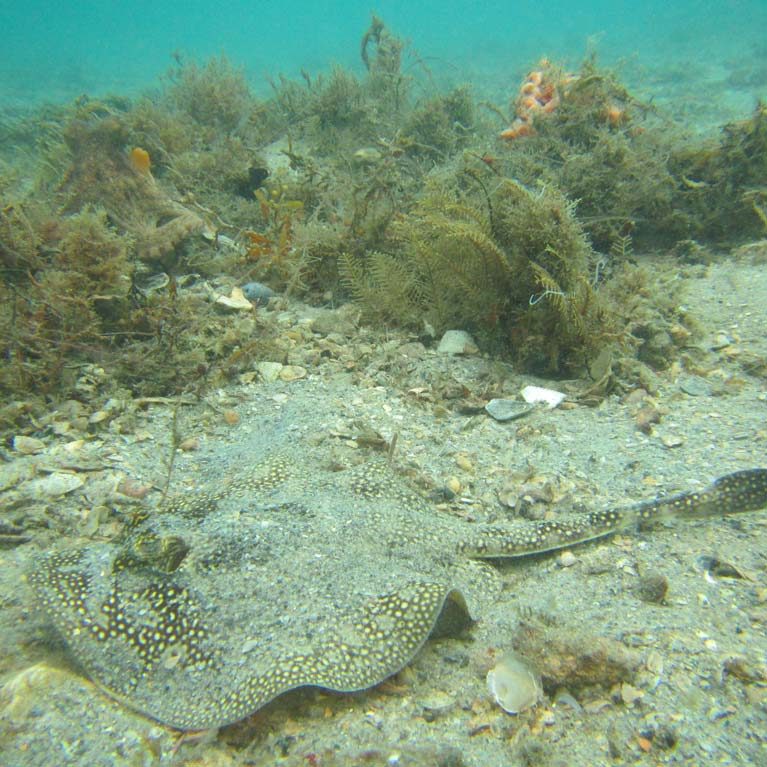Do stingrays have superpowers?
How do sharks navigate their way around the planet during long migrations? Scientists think they might be using the earth’s electro-magnetic field. By studying how captive stingrays (sharks cousins) respond to magnetic stimuli, Kyle aims to find out if the hypothesis is true.
I was born in the Philippines but grew up in Seattle, USA, where I learned to appreciate the value of a dry suit while earning my scuba certification. I received a BSc in marine science and biology from the University of Miami, then worked for a biotech start-up in Seattle. Eventually I moved to Los Angeles and got my MSc in biology from California State University Fullerton, where I showed that visceral endothermy gives the endothermic mako shark a selective advantage in food processing rates compared to sympatric ectothermic sharks. I went on to receive my PhD in...



Can the yellow stingray detect and use geomagnetic cues for orientation and navigation?
Understand and characterize how elasmobranchs sense magnetic fields and potentially use geomagnetic cues to orient and navigate through their environment
Florida Atlantic University’s (FAU) Southeast National Marine Renewable Resource Center is developing technologies that utilize the Gulfstream oceanic current as a source of renewable and sustainable energy. However, the environmental impact of such activities on the behavior of benthic and pelagic marine species is largely unknown. The yellow stingray is an ideal model species to study the effects undersea power generators on electrically and magnetically sensitive species. Elasmobranchs are known to bite and damage electrical cables but there have been no studies on the effect of magnetic fields from these cables on the orientation and navigation capabilities of these fishes. If stingrays and sharks use magnetic cues to orient and navigate then large undersea electrical cables could disrupt the migration of elasmobranchs along their traditional migratory routes.
The Earth’s magnetic field provides cues for marine organisms as they migrate between feeding, mating, and birthing habitats (Lohmann et al 2008). The strength and inclination angle of the geomagnetic field vary predictably with latitude and form isolines across the Earth’s surface. These isolines are oblique with respect to each other and create a unique combination of magnetic strength and inclination angle for each specific geographic location. Birds are known to detect either geomagnetic strength or inclination angle and can thus derive a general sense of latitude. Sea turtles and salmon can detect both of these cues and thus can derive a very specific sense of their location during navigation (Putman et al 2011, 2014). Most animals use small particles of magnetite to detect geomagnetic cues (Johnsen and Lohmann 2005). Elasmobranchs (sharks, skates, and rays) have an electrosensory system that detects the weak bioelectric fields produced by prey. Kalmijn (1978) hypothesised that as these fish swim in seawater through the Earth’s magnetic field that an electric field will be induced and detected by their electroreceptors. Therefore, elasmobranchs could potentially use the geomagnetic field to derive a sense of direction and position during migration. This project will use the magnetically sensitive yellow stingray as a model species to determine if the sensory ecology of larger benthic, pelagic, or endangered elasmobranchs could be adversely affected due to anthropogenic activities. We aim to describe the basic parameters and sensitivity of the elasmobranch magnetic sense, determine which cues sharks and rays use during migration, resolve if human activities could interfere with the migration of electrically and magnetically sensitive species, and contribute to the basic research on an IUCN data deficient species that is under pressure from a burgeoning aquarium trade, incidental fishing bycatch, and habitat loss due to coastal development.
- Determine if elasmobranchs can detect changes in the strength and inclination angle of the geomagnetic field
- Determine if elasmobranchs could use the geomagnetic field as a cue to derive a sense of direction or location
- Determine if the movements of electrically and magnetically sensitive species could be disrupted by undersea electrical cables from offshore power generators

